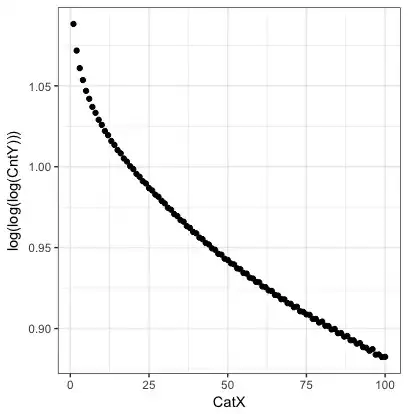I am trying to fit a model with variable x, and y. plot(x, y) shows that it is convex (downward) and decaying which makes me think I need to make a log transformation of y, but plot(x, log(y)) is still convex, even more plot(x, log(log(y))), plot(x, log(log(log(y)))) are also convex, what kind of model should I fit to this?
How does my data comes from?
Say I have a feature which takes only integer value from 1 to some big int here, I would like to see what distribution this feature follows, so I make a simple count of the feature, CatX would be the feature's value, 1,2,3,etc. CntY would be how many times the value occurs in my data:
Fit the model?
I am trying to understand the underlying distribution of my feature, but I have very rough statistic knowledge, so what distribution should this belong to?
This is a direct plot of CntY ~ CatX:
This is a plot of log(log(log(CntY))) ~ CatX:


